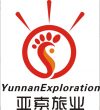
Jade Articles in Tengchong
Tengchong jade is a famous handicraft from Yunnan, with a history spanning over 500 years. The jade products from Tengchong are made from various types of jade, featuring exquisite craftsmanship and beautiful designs. The range of products includes bracelets, hairpins, earrings, jade pendants, Buddha statues, and many other items, with 18 varieties exported abroad.
Chinese Name: Tengchong Jade Articles (腾冲玉器)
Number of Varieties: 18
Material: Jade
Basic Introduction
Tengchong, known as the “Hometown of Jadeite” and “Jade City,” has a long history of jade carving, dating back more than 500 years. It is the largest jadeite trading center in Southwest China. The products are primarily made from jadeite, which is sourced from Myanmar. They are renowned for their beautiful shapes, fine craftsmanship, and delicate texture.
Product Features
Tengchong jade products are made from Myanmar jadeite (also known as jade). The products feature beautiful shapes, exquisite craftsmanship, and fine texture. The variety of products includes bracelets, brooches, hairpins, Guanyin statues, Buddha statues, earrings, chicken-heart designs, large flower pieces, small flower pieces, elephant squatting designs, animal squatting designs, and rings, among others.
History of Development
Tengchong has long been an important commercial port on the southwestern frontier. The ancient “Southern Silk Road” and the famous “Stilwell Road” passed through Tengchong into Myanmar. More than 500 years ago, Tengchong merchants pioneered the jade processing industry. During the Ming and Qing dynasties, many people from Tengchong traveled to Myanmar to engage in jade processing, which significantly increased the production of jade and stimulated the flourishing jade trade. At that time, there was a route known as the “Jade Road” or “Treasure Well Road” that connected Yongchang, Tengchong, and Myanmar’s Myitkyina.
Due to Tengchong’s strategic geographical location, it is only 358 kilometers away from the jade-producing region in Myanmar. For a long period, Tengchong became the primary gateway for Myanmar jade to enter China, accounting for almost 90% of the global jade trade volume. In 1902, the jade import volume was 271 dan (a traditional Chinese weight unit), and by 1911, it increased to 628 dan, reaching 801 dan in 1917. More than 20,000 mules and horses passed between Tengchong and Myanmar each year, bringing continuous supplies of Myanmar jade into the city. The jade processing industry reached its peak during this period. The “Small Yuecheng” area within Tengchong city became a gathering place for jewelers, where shops displayed rubies, sapphires, jade carvings, and a wide range of goods, both high-end and low-end, in a market known as the “Hundred Treasures Street.”
The prosperity of Tengchong at that time is vividly described in the lines:
“昔日繁荣百宝街,雄商大贾挟资来” (“Once prosperous Hundred Treasures Street, where great merchants came with wealth.”)
“琥珀牌坊玉石桥” (“Amber Archway and Jade Bridge”) — These phrases reflect the flourishing jade industry and the vibrant commerce of Tengchong during its peak.
The opening of the Southern Silk Road provided a convenient channel for jade to enter and exit Tengchong. As early as the Eastern Han Dynasty in the 9th year of Yongyuan (97 AD), the king of the Man country (蛮掸国王) from the region near Yongchang sent “valuable treasures” as tribute to the Eastern Han Dynasty. This is considered the first documented instance of jade entering China as a tribute. Since the Han Dynasty, jade has continuously flowed into China through the Southern Silk Road and the Tengyue section. Over two thousand years, jade from Myanmar has flooded into the western Yunnan region and beyond, with Tengchong serving as the main trading hub.
Overview of the Area
Tengchong is located on the southwestern border of Yunnan Province, adjacent to Myanmar. It has historically been an important gateway along the ancient Southwestern Silk Road. Tengchong is a well-known overseas Chinese settlement, a cultural hub, and a famous jade trading center. It is also recognized as a provincial historical and cultural city.
In the Western Han Dynasty, it was known as Dianyue, and during the mid-period of the Dali Kingdom, it became the Tengchong Prefecture. Due to its geographical importance, a military presence was established in Tengchong, and during the Ming Dynasty, a stone fortress was built, known as the “First Border City.”
The Tengchong City area borders Myanmar for 148.7 kilometers, and the distance from Tengchong to Myitkyina, the capital of Kachin State, is 217 kilometers. The region’s strategic location makes it one of the birthplaces of industrial and commercial development in Yunnan Province. Since the Song and Yuan dynasties, it has been a gathering place for gems and jade, and it was the first to develop jade processing. By the Qing Dynasty, jade processing and trade had become very prosperous, and jade trade, commercial activities, and tourism grew rapidly. Today, the “Jade City” continues to attract both domestic and international businesspeople with its fresh new look.

 7 Days GolfingTour
7 Days GolfingTour
 8 Days Group Tour
8 Days Group Tour
 8 Days Yunnan Tour
8 Days Yunnan Tour
 7 Days Shangri La Hiking
7 Days Shangri La Hiking
 11 Days Yunnan Tour
11 Days Yunnan Tour
 6 Days Yuanyang Terraces
6 Days Yuanyang Terraces
 11 Days Yunnan Tour
11 Days Yunnan Tour
 8 Days South Yunnan
8 Days South Yunnan
 7 Days Tea Tour
7 Days Tea Tour
 8 Days Muslim Tour
8 Days Muslim Tour
 12 Days Self-Driving
12 Days Self-Driving
 4 Days Haba Climbing
4 Days Haba Climbing
 Tiger Leaping Gorge
Tiger Leaping Gorge
 Stone Forest
Stone Forest
 Yunnan-Tibet
Yunnan-Tibet
 Hani Rice Terraces
Hani Rice Terraces
 Kunming
Kunming
 Lijiang
Lijiang
 Shangri-la
Shangri-la
 Dali
Dali
 XishuangBanna
XishuangBanna
 Honghe
Honghe
 Kunming
Kunming
 Lijiang
Lijiang
 Shangri-la
Shangri-la
 Yuanyang Rice Terraces
Yuanyang Rice Terraces
 Nujiang
Nujiang
 XishuangBanna
XishuangBanna
 Spring City Golf
Spring City Golf
 Snow Mountain Golf
Snow Mountain Golf
 Stone Mountain Golf
Stone Mountain Golf











